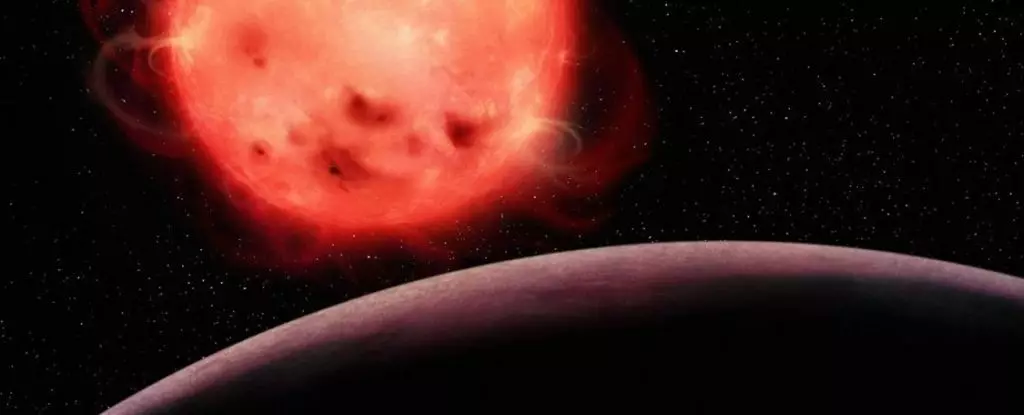Earlier this year, groundbreaking observations made by the James Webb Space Telescope (JWST) revealed disappointing news about the potential for life on TRAPPIST-1b, one of the most Earth-like exoplanets discovered in the Milky Way. Despite being just 40 light-years away, this planet lacks a detectable atmosphere that could shield it from the harsh radiation of its host star. The recent mid-infrared photometric observations were not surprising, as the primary focus was to study a smaller, rocky world under cooler conditions than usual. Now, new near-infrared spectroscopic observations conducted by the JWST have raised another important concern related to the accuracy of measurements taken of this exoplanet. It appears that the behavior of the host star may be interfering with our ability to obtain reliable data, potentially leading to false detections. While TRAPPIST-1b remains uninhabitable for life as we know it, the findings have shed light on the impact of stellar contamination in analyzing exoplanet atmospheres.
Stars do not remain constant in brightness, posing challenges for the spectroscopic observations of exoplanet atmospheres. Factors such as starspots and faculae can cause variations in brightness, interfering with scientific measurements. When an exoplanet transits in front of its host star, the star’s brightness dims slightly, allowing scientists to study the exoplanet’s atmosphere. This occurs as some starlight passes through the exoplanet’s atmosphere on the rim of the planetary disk. Researchers can examine changes in the spectrum of light during transit, searching for specific wavelengths that indicate the presence of absorbing and re-emitting molecules. However, the recent studies have revealed that stellar activity can contaminate these spectroscopic observations significantly.
Aside from the impact of starspots and faculae, stellar flares pose an additional challenge to accurate measurements. These rare and unpredictable events cause a temporary increase in the star’s brightness, lasting for several minutes or even hours. Unfortunately, such flares can disrupt the measurement of light blocked by the exoplanet and affect the data interpretation. Accounting for these signatures of stellar activity is a complex task, as modeling them accurately is difficult. However, it is crucial to factor in this contamination to ensure the correct interpretation of data.
In response to these challenges, the research team conducted extensive modeling of stellar contamination. They then proceeded with two analyses of the data: the first with the stellar contamination removed and the second with the contamination left intact. Surprisingly, both results showed minimal differences. The spectra with TRAPPIST-1b remained quite similar to those without the exoplanet. This confirmed the earlier mid-infrared photometric observations that indicated the absence of an atmosphere on TRAPPIST-1b. However, the team’s work also demonstrated the importance of accounting for stellar contamination before analyzing exoplanet data. This crucial insight will undoubtedly assist scientists in future observations of the TRAPPIST-1 system’s habitable zone planets.
The TRAPPIST-1 system holds significant promise as it comprises seven exoplanets, three of which are located within the star’s habitable zone. These planets exist at a favorable distance from the star, providing conditions that could support life as we know it. While the JWST has yet to examine these habitable zone worlds, the newfound awareness of the potential impact of stellar contamination on observations will shape future investigations. By factoring in this contamination, scientists can refine their methodologies and ensure accurate interpretations of data from the TRAPPIST-1 system and other similar exoplanet systems.
The discovery of the influence of stellar contamination on exoplanet observations has revealed a complex challenge in the field of astrophysics. Understanding the dynamics of stars and their impact on the observations of exoplanet atmospheres is crucial for accurately assessing their potential habitability. The recent findings from the JWST emphasize the significance of accounting for stellar activity to avoid false detections and misinterpretations. As technology and research progress, scientists will continue to refine their methods and find innovative ways to overcome the challenges posed by stellar contamination, unlocking a deeper understanding of the fascinating worlds beyond our own.


Leave a Reply